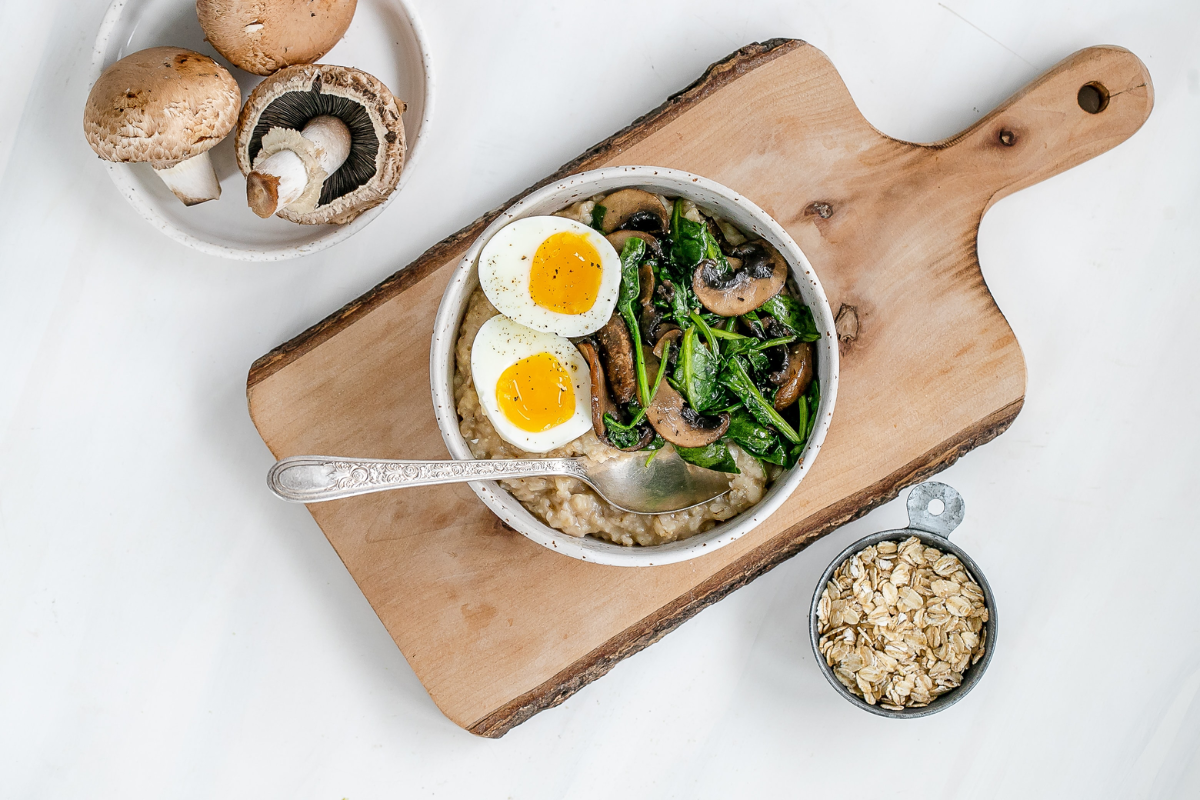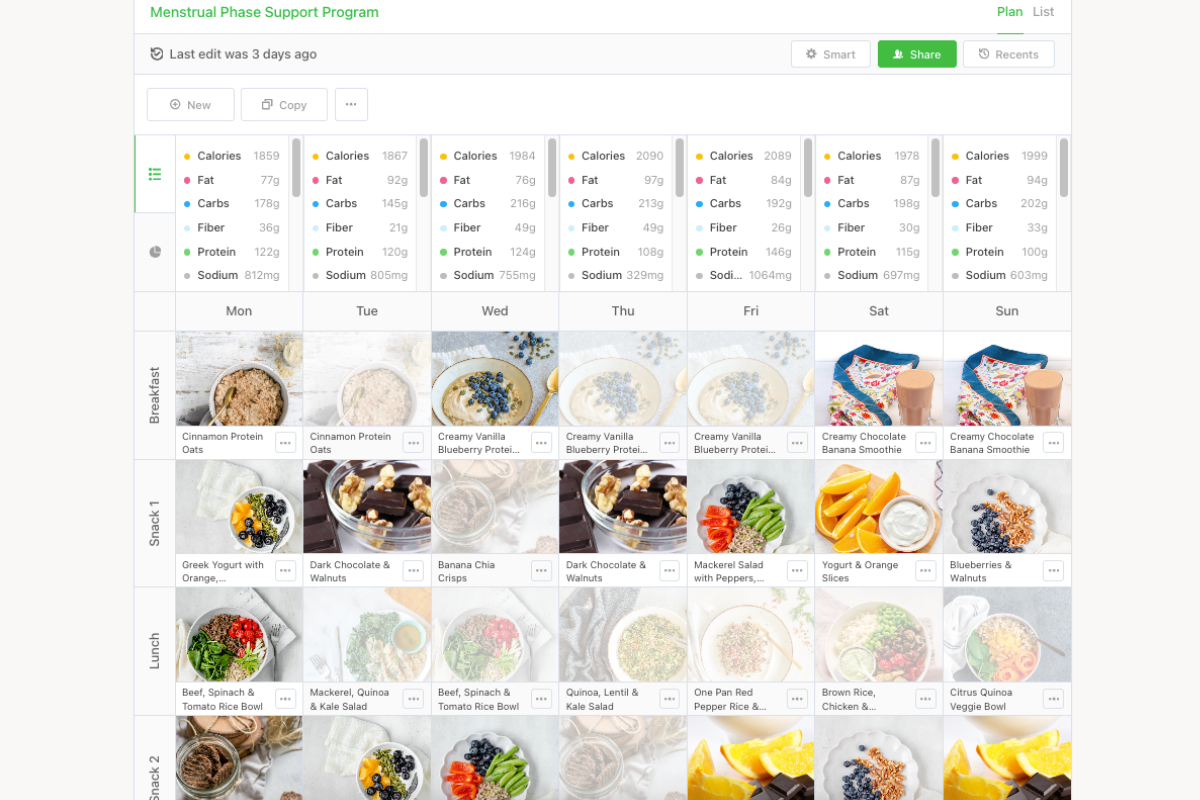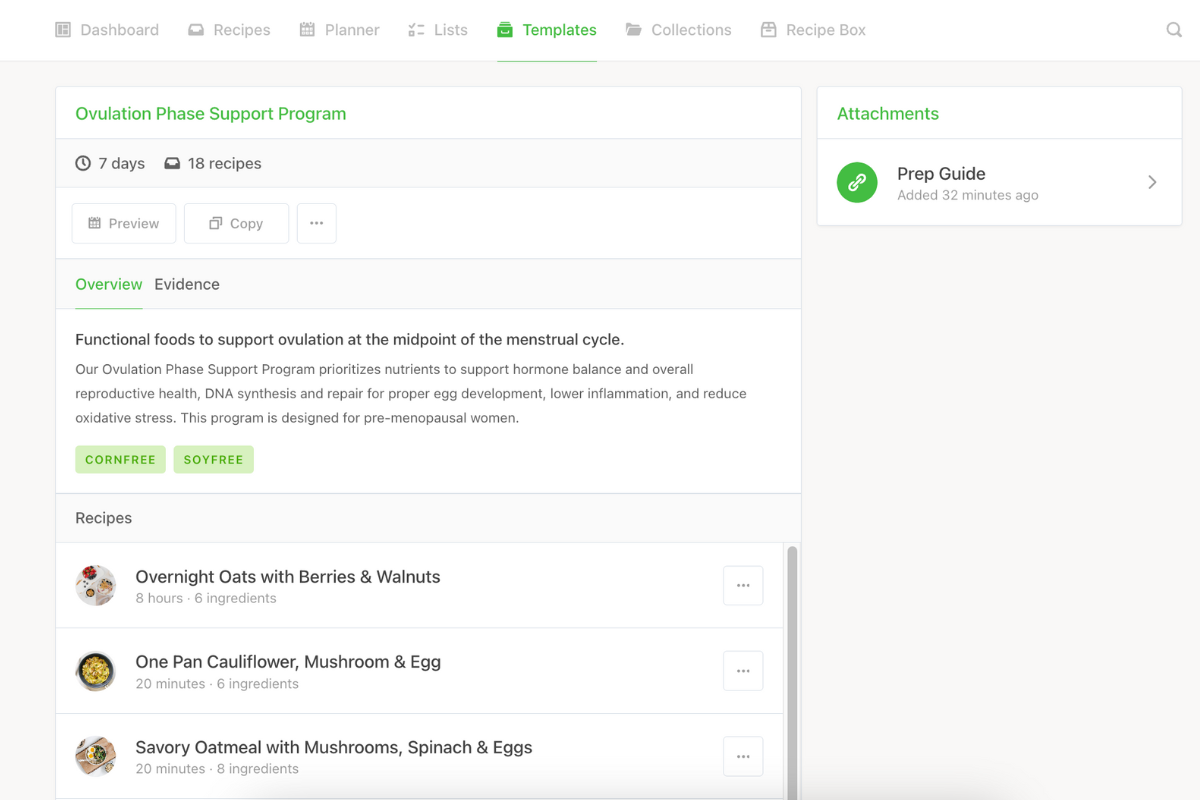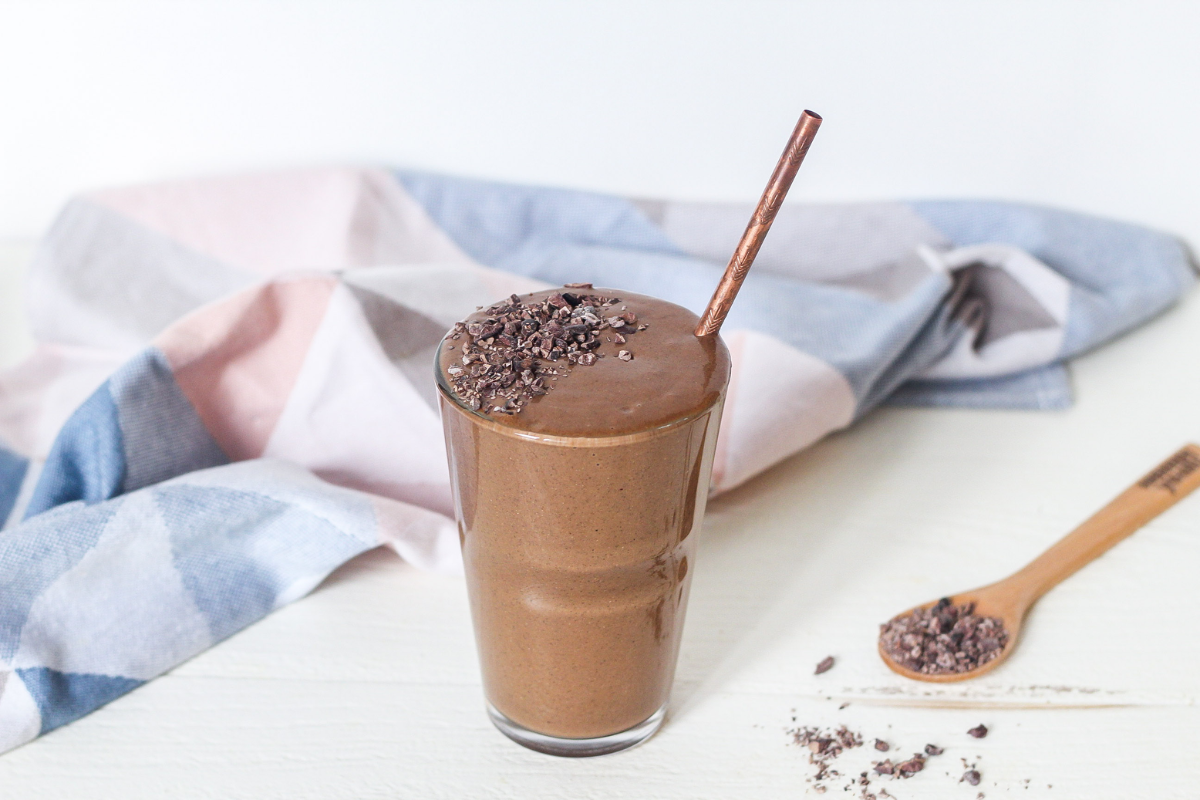A healthy menstrual cycle is a critical component of a woman’s fertility. One of the most impactful ways to optimize female reproductive health is through nutrition.
By eating a diet rich in key nutrients like fiber, omega-3s, vitamins, minerals, and antioxidants — along with other healthy lifestyle habits — your clients can achieve healthier hormonal balance. We’re looking at how to tailor nutrition to each phase of the menstrual cycle to support overall reproductive wellness and increase the likelihood of conception.
Understanding Menstrual Phases
The menstrual cycle is typically about 28 days long and is divided into four phases: menstrual, follicular, ovulation, and luteal. During each phase, the body prepares for a potential pregnancy, and if that doesn’t occur, a woman has her period.
Menstrual Phase
The menstrual phase marks the beginning of the menstrual cycle each month. It occurs when the previous month didn’t result in a pregnancy. Estrogen and progesterone decrease, triggering the breakdown and shedding of the thickened lining of the uterus (endometrium), which causes bleeding.
Follicular Phase
This is the second phase and lasts approximately two weeks, overlapping with the menstrual phase and continuing until ovulation. During the follicular phase, the pituitary gland stimulates the growth of ovarian follicles by releasing follicle-stimulating hormone (FSH). There’s one egg in each follicle and as the follicles develop, they produce estrogen. This thickens the endometrium in preparation for a potential pregnancy.
Ovulation Phase
The ovulation phase happens at the midpoint of the menstrual cycle when a woman is most fertile. The pituitary gland releases luteinizing hormone (LH), triggering the release of a mature egg from the dominant follicle in the ovary. The egg then travels down the fallopian tube, where it might be fertilized by sperm, the first step in a pregnancy.
Luteal Phase
The luteal phase starts during ovulation and continues for approximately two weeks until the next menstrual phase begins. After an egg is released, the now-empty follicle becomes a corpus luteum — a temporary structure that secretes progesterone and estrogen in preparation for a pregnancy. If there’s no fertilization, the corpus luteum degenerates after 10-14 days, causing hormone levels to drop and the start of a new cycle. On the other hand, if fertilization occurs, the corpus luteum continues making hormones to support the early stages of pregnancy.
How Nutrition Affects Your Menstrual Cycle & Fertility
Supporting the menstrual cycle through diet can help women ensure their bodies are primed for fertility. A regular cycle is one indicator of hormonal balance and regular ovulation. It also allows the uterine lining to be prepared for the implantation of a fertilized egg (should there be one). Having irregular cycles can indicate hormonal imbalances and a lower chance of becoming pregnant.
Plus, good nutrition helps support a healthy, regular menstrual cycle, lowering the risk of experiencing more severe symptoms.

What to Eat During the Phases of Your Menstrual Cycle
A woman’s menstrual cycle can be as unique as she is. To support the healthiest, most predictable, and low-symptom menstrual cycle, you can help your clients understand why and how to focus on certain nutrients at various times of the month.
Menstrual Phase
During this phase, the uterine lining is shed and bleeding occurs as estrogen and progesterone are low. It’s important to prioritize certain nutrients:
- Iron: Menstrual blood is rich in iron, so it’s important to replenish stores. Foods like lean meats, beans, lentils, and spinach can help prevent iron deficiency anemia and related fatigue.
- Magnesium: Magnesium promotes relaxation, which may alleviate menstrual cramps and support mood regulation. Good sources include whole grains, leafy greens, dark chocolate, edamame, and pumpkin seeds.
- Vitamin C: Vitamin C boosts the absorption of non-heme iron from plants. Try pairings like Brussels sprouts with chicken, kale with beef, and carrots with hummus.
- B Vitamins: There are eight B vitamins, but vitamin B6 may be especially helpful in supporting mood, energy, and other common premenstrual symptoms. You can find B vitamins in eggs, fortified cereals, whole grains, and poultry.
- Omega-3 fatty acids: Omega-3s have anti-inflammatory properties, which may help alleviate some pain associated with cramps. The best sources are fatty fish (salmon, mackerel, and tuna) but you can also get some from chia seeds, flax seeds, and walnuts.
Check out our new Menstrual Phase Support Program.

Follicular Phase
In the follicular phase, FSH stimulates ovarian follicles to mature, and rising estrogen levels prepare the endometrium for pregnancy. Here are some of the best nutrients for this phase:
- Phytoestrogens: These compounds mimic estrogen and can support healthy hormone levels and menstrual regularity. They’re found in flax seeds, soy, almonds, and strawberries.
- Iron: Iron helps produce red blood cells and move oxygen through the body. Iron stores decrease during this phase, so it’s helpful to boost dietary intake from sources like poultry, fish, lentils, and pumpkin seeds.
- Antioxidants: These compounds help protect your cells from stress and damage. They may also be beneficial when estrogen levels are low or a menstrual period isn’t happening. They’re rich in leafy greens, berries, and sweet potatoes.
- Vitamin C: Besides boosting iron absorption, vitamin C is an antioxidant. Get it from citrus, broccoli, strawberries, and bell peppers.
Check out our Follicular Phase Support Program for more.

Ovulation Phase
During ovulation, luteinizing hormone (LH) increases and triggers the release of a mature egg from the ovary, making it available for fertilization. Prioritize these nutrients:
- Zinc: This mineral is crucial in cell division and hormone regulation. Zinc-rich foods like oysters, beef, pumpkin seeds, and chickpeas help support healthy eggs.
- Folate: Folate is essential for DNA synthesis and repair, which is important for proper egg development. Good sources include legumes, leafy greens, and fortified cereals.
- Omega-3 fatty acids: Healthy fats support ovulation by helping to regulate hormones and lower inflammation. Find them in fatty fish, walnuts, and flax seeds.
- Antioxidants: Antioxidants reduce oxidative stress that can damage eggs and impair fertility. Eat colorful fruits and vegetables to gather antioxidants and protect egg health and hormonal balance.
- Vitamin D: Vitamin D promotes hormonal balance and overall reproductive health. The ovaries house vitamin D receptors, and getting enough can improve fertility and ovarian health. Get vitamin D from sunlight, fatty fish, egg yolks, fortified foods, and supplements when necessary.
Learn more about our new Ovulation Phase Support Program.

Luteal Phase Support Program
In the luteal phase, the corpus luteum forms and secretes progesterone to maintain the uterine lining. But if fertilization doesn't occur, hormones drop and there’s a period. Important nutrients during the luteal phase include:
- Fiber: During this phase, progesterone rises, which can cause constipation and cravings for sugary carbs. Getting enough fiber helps with bowel regularity. Get it from whole grains, fruit, vegetables, nuts, seeds, and legumes.
- Protein: The natural increase in progesterone causes protein breakdown, so boosting dietary intake can help prevent muscle loss, support healthy weight, and stabilize blood sugar. Protein-rich foods include poultry, fish, meat, eggs, dairy products, soy, and legumes.
- Iron: Eating more iron in this phase — from foods like tuna, turkey, leafy greens, and beef — can help prepare the body for losing iron stores during the follicular phase of the menstrual cycle.
Check out our Luteal Phase Support Program.

Foods to Avoid
While prioritizing the nutrients discussed above, there are also certain things best limited during the menstrual cycle because of how they may make bloating, cramps, mood swings, and other symptoms worse, like:
- High-sodium foods: Excessive salt can make you hang onto water, worsening bloating and discomfort. For example, ultra-processed and packaged snack foods, like potato chips, canned soups, and frozen meals, are often high in sodium.
- Caffeine: People respond to caffeine differently. For women who are more sensitive to caffeine, consuming a lot of coffee, tea, and energy drinks may worsen anxiety, and irritability, disrupt sleep, and increase breast tenderness. However, some research suggests that moderate caffeine may be associated with improved menstrual cycle function for some women.
- Saturated fat: Eating a lot of saturated fat — from foods like full-fat dairy products, meat, and coconut oil — might promote inflammation and worsen menstrual cramps.
We all have different responses to certain foods, so it’s important to note whether certain items and ingredients worsen individual symptoms. Keeping a food and symptom log may help provide insight.
Lifestyle Considerations
There are also lifestyle habits that can impact a healthy menstrual cycle:
- Alcohol: Excessive alcohol can throw off hormonal balance and worsen symptoms like irritability and bloating.
- Nicotine: Among its other known health effects, smoking promotes inflammation, can worsen menstrual cramps, and even lead to irregular cycles.
- Stress management: Relaxation techniques like meditation, journaling, yoga, or deep breathing exercises can help regulate hormones and support mental health, potentially reducing symptoms like irritability and anxiety.
- Exercise: Staying active with things like walking, biking, or swimming improves circulation, reduces stress, and can alleviate cramps and bloating.
- Sleep: Experts recommend adults get 7-8 hours of quality sleep, which is a crucial time for the body to rest, repair, and rejuvenate and can help you manage menstrual symptoms.
Learn more about A Comprehensive Guide to Nutrition for Better Sleep
Nourishing Every Phase: The Path to Optimal Fertility
Equipping your clients with the knowledge and resources to optimize the nutritional quality of their diet can help them better manage menstrual cycle-related symptoms and support fertility.
Ready to create your fertility support plan? Get started today with our templates.
If you are not yet a member of That Clean Life, watch our demo here to see how it works.

